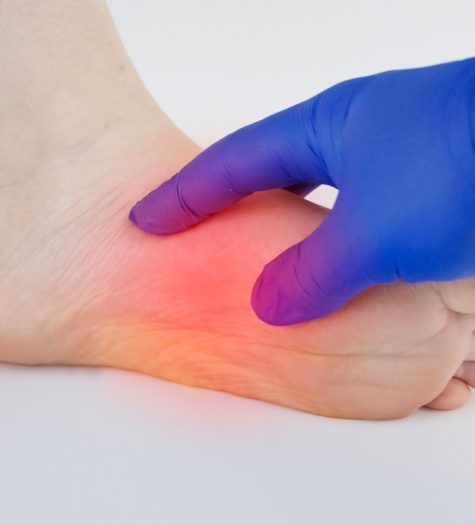What is Plantar Fasciitis?
Statistics:
- Plantar fasciitis is the most common causes of plantar heel pain
- 73% of patients with heel pain are diagnosed with either plantar fasciitis or heel spur syndrome
- 15% of patients who see a podiatrist complain of heel pain
- 90% of those who suffer from plantar fasciitis respond to nonsurgical care
- 83.5% of patients with plantar fasciitis experience pain with their first steps in the morning
- Plantar fasciitis can occur with or without a heel spur present

What is Plantar Fasciitis?
Statistics:
- Plantar fasciitis is the most common causes of plantar heel pain
- 73% of patients with heel pain are diagnosed with either plantar fasciitis or heel spur syndrome
- 15% of patients who see a podiatrist complain of heel pain
- 90% of those who suffer from plantar fasciitis respond to nonsurgical care
- 83.5% of patients with plantar fasciitis experience pain with their first steps in the morning
- Plantar fasciitis can occur with or without a heel spur present

Causes of Plantar Fasciitis:
- Stretching the long band of tissue that connects the heel and the ball of the foot
- Muscle imbalance
- Bone deformity
- Obesity
- Trauma
- Tightness of the muscles on the back of the leg
What can you do?
- Warm-up and stretch properly before exercise
- Wear appropriate shoe gear
- RICE — rest, ice, compression, and elevation
Causes of Plantar Fasciitis:
- Stretching the long band of tissue that connects the heel and the ball of the foot
- Muscle imbalance
- Bone deformity
- Obesity
- Trauma
- Tightness of the muscles on the back of the leg
What can you do?
- Warm-up and stretch properly before exercise
- Wear appropriate shoe gear
- RICE — rest, ice, compression, and elevation

What will a Podiatric Physician do for you?
- Perform a physical examination
- Perform x-ray evaluation
- Recommend taping
- Prescribe orthotic devices
- Prescribe appropriate medications
- Administer injections
- Perform surgery if necessary
Your podiatric physician/surgeon has been trained specifically and extensively in the diagnosis and treatment of all manners of foot conditions. This training encompasses all of the intricately related systems and structures of the foot and lower leg including neurological, circulatory, skin, and the musculoskeletal system, which includes bones, joints, ligaments, tendons, muscles, and nerves.
What will a Podiatric Physician do for you?
- Perform a physical examination
- Perform x-ray evaluation
- Recommend taping
- Prescribe orthotic devices
- Prescribe appropriate medications
- Administer injections
- Perform surgery if necessary
Your podiatric physician/surgeon has been trained specifically and extensively in the diagnosis and treatment of all manners of foot conditions. This training encompasses all of the intricately related systems and structures of the foot and lower leg including neurological, circulatory, skin, and the musculoskeletal system, which includes bones, joints, ligaments, tendons, muscles, and nerves.

